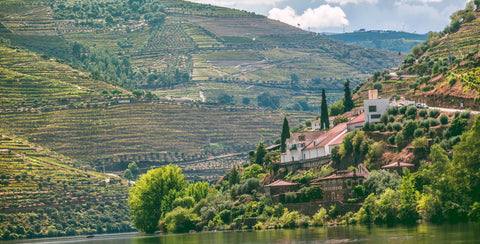Port wine finds its roots in the lush Douro Valley in northern Portugal, where vineyards were established by the Romans over 2,000 years ago. However, it wasn't until the 17th century that Port as we know it began to take shape. The unique terroir of the Douro Valley, with its steep terraces, intense heat, and schist soil, creates a challenging environment for grape growing. These conditions contribute to the grapes' intense flavors, which are essential for producing high-quality Port.
The history of Port is closely tied to the relationship between England and Portugal. In 1386, the Treaty of Windsor established a lasting alliance between the two countries, leading to stronger economic ties. By the 17th century, England was a major consumer of French wines, but political and trade conflicts with France led the English to seek alternative sources of wine.
During this time, British merchants turned to Portugal, where they discovered a unique, fortified wine from the Douro region. To stabilize the wine for long sea voyages and to preserve its flavor, they began adding brandy, a practice that would become standard in Port production. The addition of grape spirit halts fermentation, leaving residual sugars and giving Port its characteristic sweetness and richness.

In 1756, the Douro Valley became one of the world’s first officially demarcated wine regions, thanks to the Marquês de Pombal, a Portuguese statesman who sought to regulate the quality and authenticity of Port wine. His establishment of the Companhia Geral da Agricultura das Vinhas do Alto Douro (General Company for the Agriculture of the Vineyards of the Upper Douro) helped prevent fraudulent practices and maintain high standards.
Many British families played a central role in the development of the Port industry. Names like Taylor, Croft, Graham, and Sandeman became synonymous with quality Port. These families not only invested in vineyards but also established “lodges” in Vila Nova de Gaia, where Port wine was stored and aged after its journey down the Douro River. These lodges remain iconic in the region and are a major part of the Port wine experience for visitors today.
Over time, different styles of Port were developed, each with distinct aging processes and characteristics:
Ruby Port: Known for its youthful fruitiness and deep red color, it is typically aged in large vats to preserve its freshness.
Tawny Port: Aged in smaller oak barrels, allowing it to oxidize and develop nutty, caramel flavors, with a lighter, tawny color.
Vintage Port: The most prestigious style, made only from exceptional harvests and aged in bottles for long periods to develop complexity.
Late-Bottled Vintage (LBV): Similar to Vintage Port but aged in barrels longer before bottling, offering a more accessible, ready-to-drink version.
The 20th century brought changes to the Port industry as new international markets opened up and production techniques improved. Portugal’s entry into the European Union in 1986 further strengthened the country’s wine industry, leading to increased investment and modernization.
Today, Port wine is protected by the Denominação de Origem Controlada (DOC) regulations, which ensure quality and authenticity. Port is enjoyed worldwide and remains a symbol of Portuguese heritage. Visitors to the Douro Valley and Porto can explore its historic vineyards and cellars, experiencing firsthand the legacy of this unique wine.
The story of Port wine reflects the resilience and innovation of Portuguese winemakers, the enduring Anglo-Portuguese alliance, and a dedication to quality that has made Port one of the world’s most beloved wines.



